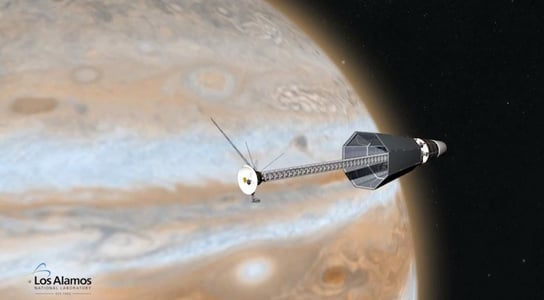
A proposed deep-space probe to Jupiter that uses the radioactive nuclear engine proposed at NASA and Los Alamos. Credit: Los Alamos National Laboratory
Researchers at NASA’s Glenn Research Center and Los Alamos National Laboratory have tested a small prototype of a nuclear-reactor engine design, which could power deep space exploration probes.
The design is based on a Stirling engine, developed in the 19th century that uses hot pressurized gas to push a piston. It would use a fifty-pound nuclear uranium battery to generate heat, which would be ferried off to eight Stirling engines to generate 500 watts of power.
The test involved a pared-down prototype with a single Stirling engine that produced about 24 watts of power. Most deep space probes require 600 to 700 watts of power, so it will still take some time before an engine like this produces enough power. This is the first time that a nuclear reactor system was tested to power a spacecraft in the USA since 1965.
Nuclear engines allow for the exploration of the entire solar system. Beyond Mars, sunlight is so weak that solar panels would have to be football-field-sized in order to get enough power to run a spacecraft and transmit data back to Earth.
In the past NASA used plutonium-238 to power its deep space probes, including the Voyager spacecrafts and the Cassini mission. Since the early 1980s, the US began decommissioning its plutonium production sites and by 1992 there was no way of generating new plutonium-238.
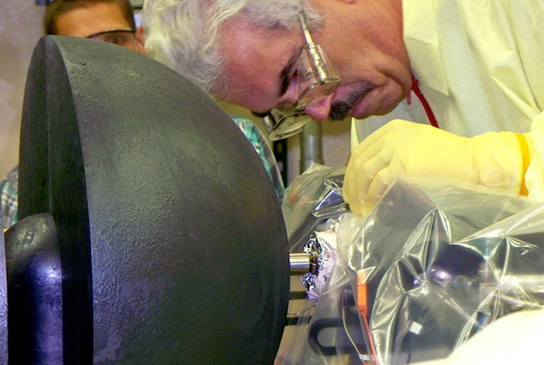
Los Alamos engineer John Bounds tests a prototype nuclear reactor engine. Credit: NASA
NASA’s Curiosity rover carried some of the last American plutonium to the Red Planet. In 2011, NASA and the Department of Energy received $10 million to restart plutonium production, and this should allow the generation of a few pounds of plutonium every year. A nuclear Stirling engine using uranium would reduce the dependency and demand for plutonium-238.
If created, the nuclear Stirling engine would help scientists explore the giant outer planets and all their moons and could also be used to power a robotic probe on Venus.



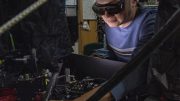
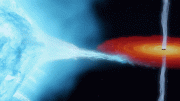
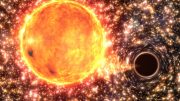
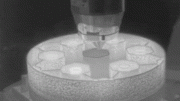
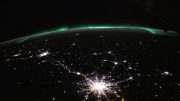

A Stirling engine produces mechanical energy from a heat differential. It turns something. How do you convert this motion to space propulsion? I suppose turning a propeller is out of question.
I have the same question as Mario S. I just looked up what a Sterling engine does, but what is the propellent to be used?
The video doesn’t give details about the proposed propulsion system; but at 4:12, they do mention the possibility of powering electrically driven ion thrusters…here is the original press release from Los Alamos National Laboratory
I don’t think it’s propulsion,it’s a on board power source,6 or 7 hundred watts is far too puny to be propulsion